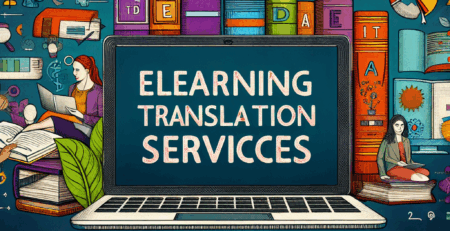SCORM Compliance Demystified for L&D Leaders Guide
Understanding SCORM compliance can seem overwhelming, especially if you’re new to the world of Learning and Development (L&D). But fear not. I’m here to break down the essentials of SCORM compliance, make it simple, and explain why it is vital for your organization’s e-learning strategies. Let’s embark on this journey together to understand how SCORM compliance can improve your training programs.
The Basics of SCORM Compliance
First, I want to clarify what SCORM is. SCORM stands for Sharable Content Object Reference Model. It is a set of technical standards that ensures that e-learning content can be shared and reused across different platforms. Essentially, SCORM compliance means that your e-learning courses can communicate effectively with Learning Management Systems (LMS). It is the backbone that allows us to track and manage learners’ progress, completion rates, and assessment scores.
SCORM compliance is significant due to several reasons. Studies indicate that over 80% of organizations use SCORM-compliant content in their training programs. This compliance ensures that your material can remain relevant and compatible with various LMS. If your content doesn’t comply with SCORM standards, you’ll likely face challenges in sharing and reusing that investment efficiently.
The Importance of SCORM Compliance in E-Learning
Understanding the importance of SCORM compliance is crucial for any L&D leader. E-learning content is an investment of time and resources. If your content is SCORM-compliant, you can:
– Ensure compatibility: With SCORM compliance, your e-learning courses can be integrated smoothly into different LMS.
– Track learner progress: You can easily monitor how learners interact with the material by tracking scores and completion statuses.
– Reduce development costs: SCORM-compliant content can often be reused across various courses or programs. This efficiency can save significant amounts in development time and costs.
In fact, according to recent studies, organizations that utilized SCORM-compliant content saw an average of 25% reduction in e-learning development costs and a 30% increase in learner engagement.
SCORM Compliance Versions Explained
Most L&D leaders may not know that SCORM has different versions. The three commonly used versions available are SCORM 1.1, SCORM 1.2, and SCORM 2004. Here’s a brief overview of each version:
– SCORM 1.1: This is an early version that has limited functionality. It lacks the ability to support features that we consider standard today.
– SCORM 1.2: This version is widely used as it improved tracking and reporting capabilities, making it a popular choice for many organizations.
– SCORM 2004: This is the most advanced version, enhancing the way content communicates with the LMS. It allows for more complex interactions and supports sequencing and navigation rules.
Understanding which SCORM version you need is essential. It is recommended to use SCORM 1.2 or SCORM 2004 for future-ready courses since they support the latest features and tracking methods.
Common Misconceptions About SCORM Compliance
There are many misconceptions about SCORM compliance that can create confusion. Let’s address a few of them:
– SCORM Is Only for E-Learning: Some believe that SCORM compliance is only relevant for e-learning. However, it is applicable to any digital learning content that needs to be shared and tracked.
– All LMS Are SCORM Compliance Ready: It is a misconception that all Learning Management Systems support SCORM-compliant content. It is important to verify before committing to any LMS.
– SCORM Is Outdated: While SCORM is an older standard, many organizations still rely on it due to its reliability and widespread support.
Being aware of these misconceptions can help you make informed decisions about your L&D strategies and methodologies.
Steps to Ensure SCORM Compliance
Now, let’s discuss steps you can take to ensure SCORM compliance in your e-learning courses.
1. Choose the Right Authoring Tool: Start by selecting an authoring tool that supports SCORM compliance. Many reputable tools offer this feature, and it’s key to check which version of SCORM they support.
2. Structure Your Content Properly: Organize your content into Sharable Content Objects (SCOs). This modular approach makes it easy to track and reuse content.
3. Use Standardized Metadata: Employ standardized metadata formats for your courses to ensure easy integration and compatibility with an LMS.
4. Test for Compliance: Before launching your course, always conduct a thorough compliance test. There are various testing tools available that can help you identify any issues with SCORM compliance.
5. Stay Updated: Make sure you are aware of the latest SCORM developments and updates. New LMS features may require changes in how you design your content.
Following these steps will help you create SCORM-compliant content that enhances tracking and reporting capabilities, ultimately benefiting your organization.
The Future of SCORM Compliance
As technology advances, it’s natural to wonder what the future holds for SCORM compliance. While SCORM has been around for years, newer technologies are emerging. For instance, xAPI (Experience API) and cmi5 offer more extensive tracking and reporting features compared to SCORM.
However, SCORM compliance will continue to be relevant for the foreseeable future. Many organizations still use SCORM as a standard, ensuring its longevity in the e-learning landscape. In fact, statistics reveal that about 70% of companies continue to rely on SCORM in their learning initiatives.
As an L&D leader, it’s essential to keep an eye on the horizon. While SCORM remains a key player, you may want to explore integrating newer technologies as they become more established. By staying informed and adaptable, you can ensure your training programs evolve with the industry.
Final Thoughts on SCORM Compliance
In conclusion, SCORM compliance is more than just a technical requirement; it is a vital aspect of developing efficient and effective e-learning programs. By ensuring that your content is SCORM-compliant, you can enhance the learning experience and optimize tracking and reporting.
Don’t allow the complexities of SCORM compliance to deter you. Remember, taking the time to understand and implement these standards can lead to more engaging and productive learning experiences within your organization. Whether you are creating new courses or revisiting older ones, SCORM compliance is a crucial investment that pays off in the long run.
In this digital age, where learning opportunities are abundant, being equipped with the knowledge of SCORM compliance can empower you as an L&D leader. Let’s take the leap together toward a bright future that utilizes tech effectively for maximizing learning outcomes.












Leave a Reply